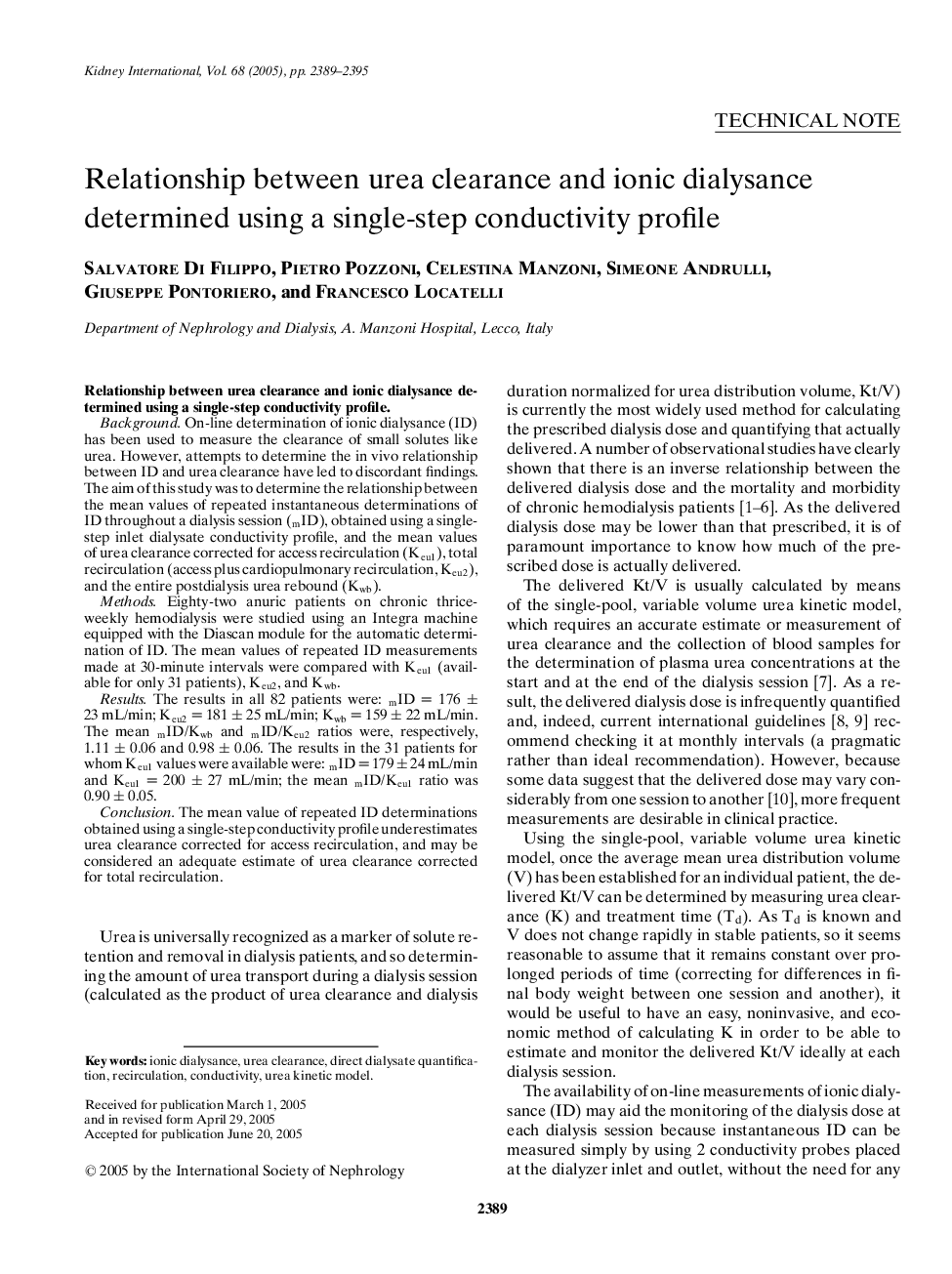| Article ID | Journal | Published Year | Pages | File Type |
|---|---|---|---|---|
| 3888311 | Kidney International | 2005 | 7 Pages |
Relationship between urea clearance and ionic dialysance determined using a single-step conductivity profile.BackgroundOn-line determination of ionic dialysance (ID) has been used to measure the clearance of small solutes like urea. However, attempts to determine the in vivo relationship between ID and urea clearance have led to discordant findings. The aim of this study was to determine the relationship between the mean values of repeated instantaneous determinations of ID throughout a dialysis session (mID), obtained using a single-step inlet dialysate conductivity profile, and the mean values of urea clearance corrected for access recirculation (Keu1), total recirculation (access plus cardiopulmonary recirculation, Keu2), and the entire postdialysis urea rebound (Kwb).MethodsEighty-two anuric patients on chronic thrice-weekly hemodialysis were studied using an Integra machine equipped with the Diascan module for the automatic determination of ID. The mean values of repeated ID measurements made at 30-minute intervals were compared with Keu1 (available for only 31 patients), Keu2, and Kwb.ResultsThe results in all 82 patients were: mID = 176 ± 23 mL/min; Keu2 = 181 ± 25 mL/min; Kwb = 159 ± 22 mL/min. The mean mID/Kwb and mID/Keu2 ratios were, respectively, 1.11 ± 0.06 and 0.98 ± 0.06. The results in the 31 patients for whom Keu1 values were available were: mID = 179 ± 24 mL/min and Keu1 = 200 ± 27 mL/min; the mean mID/Keu1 ratio was 0.90 ± 0.05.ConclusionThe mean value of repeated ID determinations obtained using a single-step conductivity profile underestimates urea clearance corrected for access recirculation, and may be considered an adequate estimate of urea clearance corrected for total recirculation.
